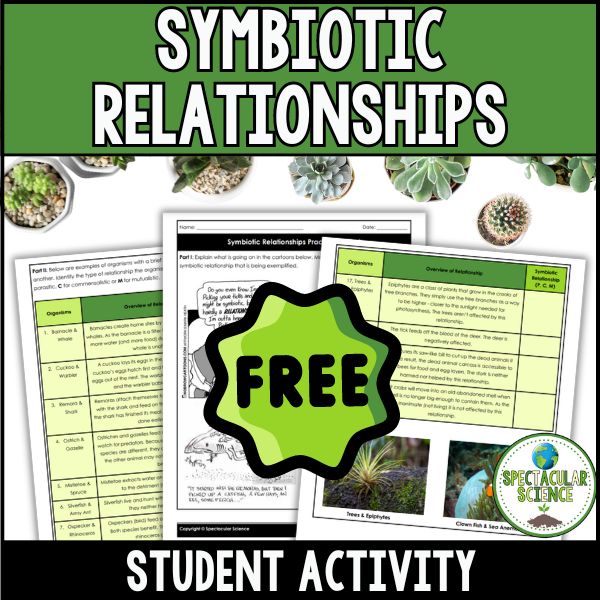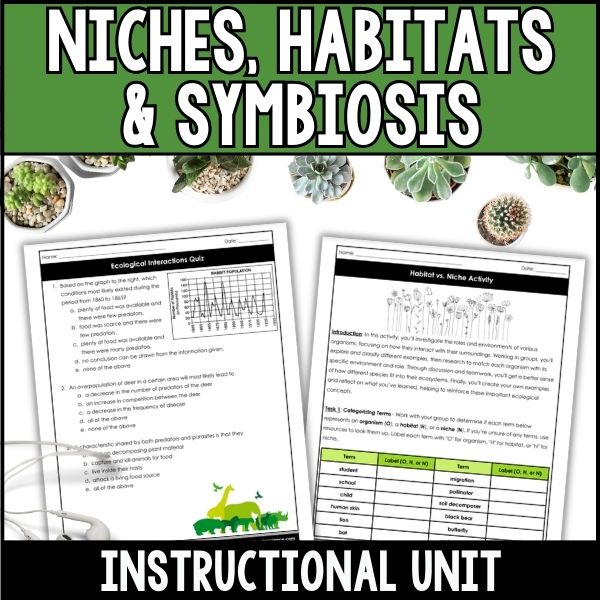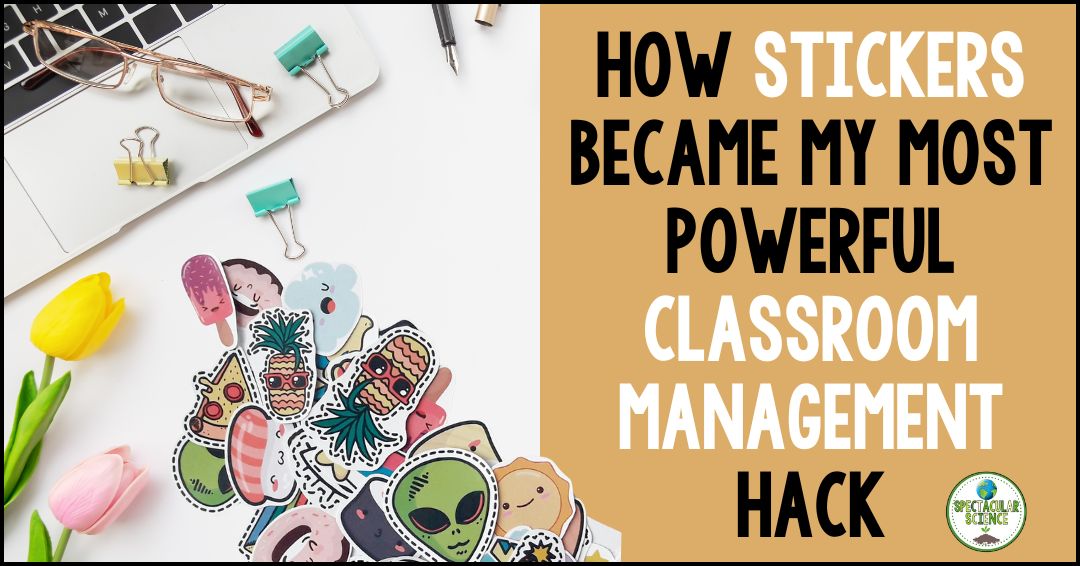
Teaching about symbiotic relationships offers students a captivating journey into the hidden workings of nature, unveiling the countless examples of cooperation, dependence, and coexistence that exist around us. By exploring these partnerships, students can gain insights into the complex web of life, the role of each species within their ecosystems, and the interplay between their survival strategies.
Moreover, teaching symbiotic relationships cultivates critical thinking skills, promoting an understanding of cause-and-effect relationships, patterns, and the interdependence of living organisms. It encourages students to approach scientific inquiry with curiosity and helps them develop a holistic perspective on environmental issues, emphasizing the importance of balance and sustainability.
Have you noticed that the level of engagement in your class is enhanced when you discuss animals, their lifestyles and habitat choices?

In my class, the ecology unit is an immersive experience. Students love to feel as if they are part of the environments in which these organisms are living. We discuss environments on both a global and local scale.
I take about two weeks to teach symbiotic relationships in my class. First, we cover the difference between an organism’s niche and their habitat. Then we dive deep into mutualism, commensalism and parasitism, the three types of symbiotic relationships. This unit addresses the following essential questions, “How does an organism’s niche differ from its habitat?” and “How do organisms interact with one another?”
Teaching Strategies for Maximum Engagement:
- Real-World Case Studies: Share compelling case studies of symbiotic relationships from different ecosystems. Discuss how these interactions contribute to the overall health and balance of the ecosystem.
- Field Trips and Nature Walks: Consider organizing field trips or nature walks to local ecosystems. This hands-on experience can reinforce classroom learning and allow students to witness symbiotic relationships in action.
- Role-Playing: Organize role-playing activities where students act out different symbiotic relationships.
- Simulation Games: Use simulation games or online resources to simulate ecological scenarios, allowing students to explore the consequences of various symbiotic interactions.
- Guest Speakers: Invite experts or local ecologists to share their experiences and knowledge about symbiotic relationships. This provides students with real-world insights and connections to potential careers in ecology.
Niches vs. Habitats & symbiotic relationships unit
Embark on an educational journey with this comprehensive two-week unit designed for grades 6th – 12th. Dive into the intricate world of ecological relationships, exploring the fundamental questions: “How does an organism’s niche differ from its habitat?” and “How do organisms interact with one another?”

What’s Included:
- Unit Pacing Guide:
- A meticulously crafted guide for a seamless two-week exploration, ensuring every aspect of the unit is covered with precision.
- Niches vs. Habitats Presentation & Guided Notes:
- Engaging visuals and carefully curated content to elucidate the distinctions between niches and habitats. Corresponding guided notes for enhanced understanding.
- Niches vs. Habitats Practice Packet & Answer Key:
- Reinforce learning with hands-on practice exercises. Comprehensive answer key provided for easy assessment.
- Niches Creative Project:
- Foster creativity with a project that allows students to express their understanding of niches in an imaginative way.
- Species Interactions Lesson Plan:
- A detailed lesson plan to guide educators through teaching about species interactions, emphasizing ecological dynamics.
- Symbiosis Do Now:
- Ignite curiosity with a thought-provoking ‘Do Now’ activity, setting the stage for symbiotic relationship exploration.
- Symbiotic Relationships Presentation & Guided Notes:
- Delve into the fascinating world of symbiosis using captivating visuals and guided notes for comprehensive comprehension.
- Ecological Interactions Reading Comprehension Activity & Answer Key:
- Develop literacy skills with a reading comprehension activity that explores the intricacies of ecological interactions. Answer key provided for easy assessment.
- Symbiotic Relationships Practice Packet & Answer Key:
- Solidify knowledge with practice exercises focused on symbiotic relationships. Answer key included for quick feedback.
- Ecological Interactions Lab & Answer Key:
- Bring science to life with a hands-on lab experience exploring ecological interactions. Answer key for seamless evaluation.
- Niches vs. Habitats & Symbiosis Quiz & Answer Key:
- Assess understanding with a thoughtfully designed quiz covering niches, habitats, and symbiosis. Answer key for efficient grading.
- Ecological Interactions Quiz & Answer Key:
- Evaluate comprehension of ecological interactions with a comprehensive quiz. Answer key provided for quick and accurate assessment.
download your free symbiotic relationships practice packet now!
Interested in adding this unit to your curriculum, but want a sample first? Download a free copy of the Symbiotic Relationships Practice Packet here!

Be sure to check out my two-month long Ecology bundle with all kinds of extra activities about environmental connections, animal migration, abiotic and biotic factors, aquatic and terrestrial biomes, food chains and food webs, and so much more. We all know how nice it is to have DONE FOR YOU activities.

















